Marrying Vega and Zen: The AMD Ryzen 5 2400G Review
by Ian Cutress on February 12, 2018 9:00 AM ESTBenchmarking Performance: CPU Legacy Tests
Our legacy tests represent benchmarks that were once at the height of their time. Some of these are industry standard synthetics, and we have data going back over 10 years. All of the data here has been rerun on Windows 10, and we plan to go back several generations of components to see how performance has evolved.
All of our benchmark results can also be found in our benchmark engine, Bench.
3D Particle Movement v1
3DPM is a self-penned benchmark, taking basic 3D movement algorithms used in Brownian Motion simulations and testing them for speed. High floating point performance, MHz and IPC wins in the single thread version, whereas the multithread version has to handle the threads and loves more cores. This is the original version, written in the style of a typical non-computer science student coding up an algorithm for their theoretical problem, and comes without any non-obvious optimizations not already performed by the compiler, such as false sharing.
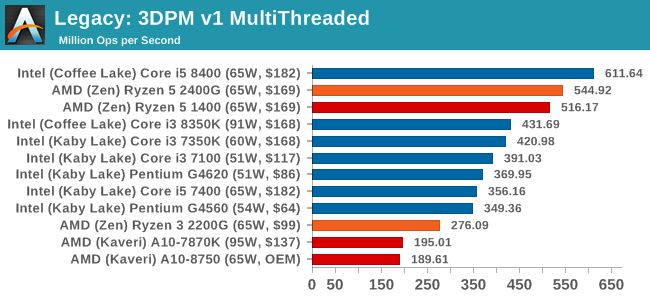
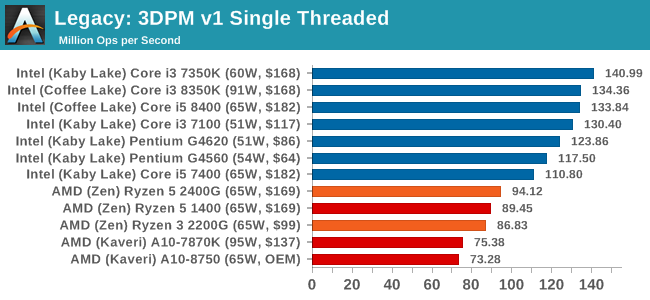
CineBench 11.5 and 10
Cinebench is a widely known benchmarking tool for measuring performance relative to MAXON's animation software Cinema 4D. Cinebench has been optimized over a decade and focuses on purely CPU horsepower, meaning if there is a discrepancy in pure throughput characteristics, Cinebench is likely to show that discrepancy. Arguably other software doesn't make use of all the tools available, so the real world relevance might purely be academic, but given our large database of data for Cinebench it seems difficult to ignore a small five minute test. We run the modern version 15 in this test, as well as the older 11.5 and 10 due to our back data.

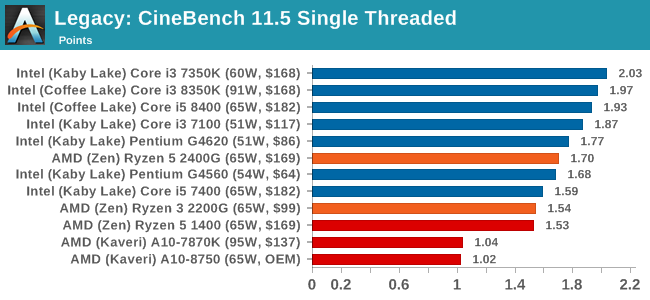
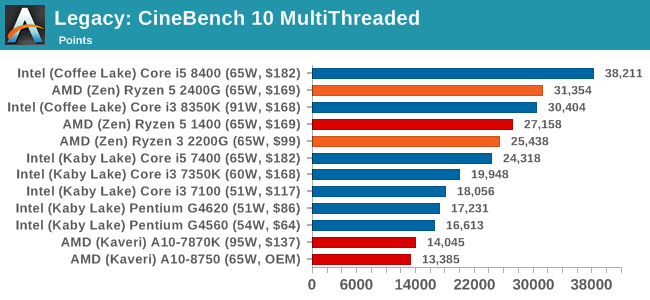
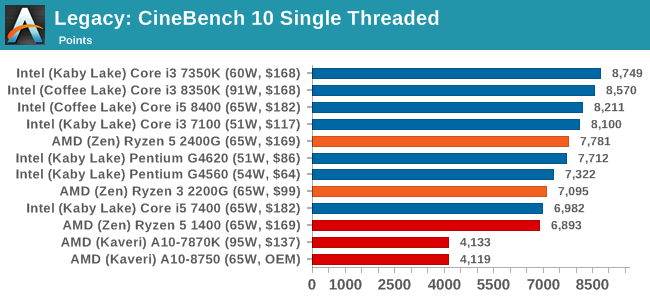
x264 HD 3.0
Similarly, the x264 HD 3.0 package we use here is also kept for historic regressional data. The latest version is 5.0.1, and encodes a 1080p video clip into a high quality x264 file. Version 3.0 only performs the same test on a 720p file, and in most circumstances the software performance hits its limit on high end processors, but still works well for mainstream and low-end. Also, this version only takes a few minutes, whereas the latest can take over 90 minutes to run.
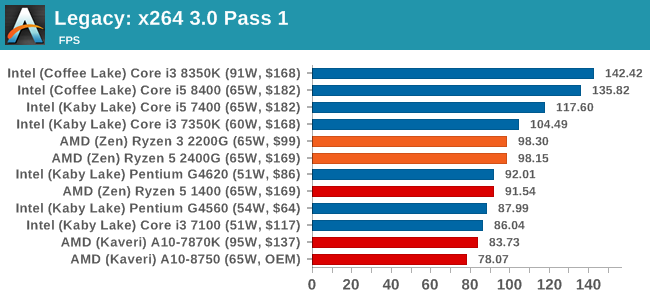
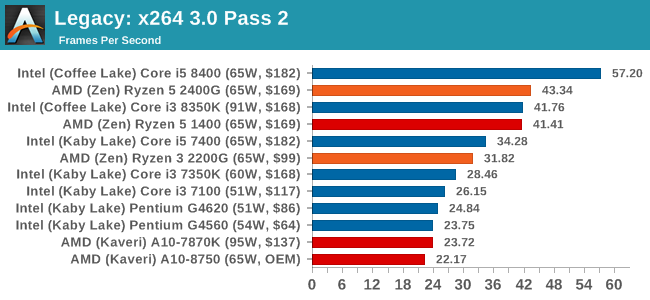










177 Comments
View All Comments
Lolimaster - Monday, February 12, 2018 - link
You don't another model, just disable high clocked pstates till you get the power consumption you want.I can lock my Athlon II X4 to 800Mhz if I desire.
Lolimaster - Monday, February 12, 2018 - link
You can simply set pstate for a lower base clock and also undervolt if you want to reduce power consupmtion even more.Or the lazy way, cTDP in bios to 45w.
Manch - Tuesday, February 13, 2018 - link
Ask and ye shall receivehttps://www.anandtech.com/show/12428/amd-readies-r...
Cryio - Monday, February 12, 2018 - link
This review kind of confused me?It mentioned it's going to compare the A12 9800, but this APU is nowhere to be seen in benchmarks.
Then out of nowhere come A10 7870K, which is fine I guess, but then there's the A10 8750, which doesn't exit, I can asume it's 7850, yet a 7850 non K APU doesn't exist, so what's happening here?
Simon_Says - Monday, February 12, 2018 - link
Will there be any analysis on current and potential future HTPC performance? While it won't support Netflix 4k or UHDBR (yet, thanks Playready 3.0) I for one would still like to know how it handles HDR for local media playback and Youtube, and if it will have the CPU grunt to software decode AV1.Drazick - Monday, February 12, 2018 - link
Does the Ryzen have any hardware based unit for Video trans coding?Could you test that as well (Speed and Quality).
It will be interesting as this CPU can be heaven for HTPC and for NAS with Multimedia capabilities.
Thank You.
GreenReaper - Wednesday, February 14, 2018 - link
It is meant to support up to 4K H.264/5 at 30/60/120FPS for 4K/1440p/1080p resolutions. Obviously it'd be nice to see people testing this out, and the quality of the resulting video.gerz1219 - Monday, February 12, 2018 - link
Still not quite getting the point of this product. Back when it made sense to build an HTPC, I liked the idea of the Bulldozer-era APU, so that I could play games on the TV without having a noisy gaming rig in the living room. But the performance is just never quite there, and it looks like it will be some time before you can spend ~$400 and get 4K gaming in the living room. So why not just buy an Xbox One X or PS4? I also bought a Shield TV recently for $200 and that streams games from my VR/4K rig just fine onto the TV. I'm just not seeing the need for a budget product that's struggling at 1080p and costs about the same as a 4K console.jjj - Monday, February 12, 2018 - link
There are 7+ billion people on this planet and the vast majority of them will never be able to afford a console or to pay a single cent for software - consoles are cheap because they screw you on the software side.Vs the global average you are swimming in money.
And ofc the majority of the PC market is commercial as consumer has been declining hard this decade.
Most humans can barely put food on the table, if that and even a 200$ TV is a huge investment they can afford once every 15 years.
Pinn - Monday, February 12, 2018 - link
But $10 per day on cigarettes is fine?